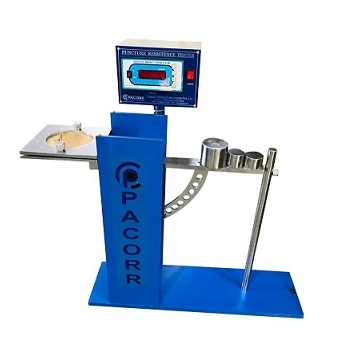
Evaluate Puncture Resistance of Foam Sheets
 Foam sheets are comprehensively used in the Mattresses and Packaging Industry. They are a good substitute for thermocol packaging in televisions, computers, coolers, garments washers, electronic stuff, dish sets, pottery, polyester yarn/film, painstaking work, printers, UPS, cash teller machines, symptomatic units, careful equipment, and other delicate and fragile products. In electronic machines, it is used as corner cushions, cradles, embodiment squares, ribs, bolster cushions, glue supported sheets and many more.
Foam sheets are comprehensively used in the Mattresses and Packaging Industry. They are a good substitute for thermocol packaging in televisions, computers, coolers, garments washers, electronic stuff, dish sets, pottery, polyester yarn/film, painstaking work, printers, UPS, cash teller machines, symptomatic units, careful equipment, and other delicate and fragile products. In electronic machines, it is used as corner cushions, cradles, embodiment squares, ribs, bolster cushions, glue supported sheets and many more.
EPE rolls and insu-tubes are generally used and protecting windows, split AC, air dealing units and AC ducting, mechanical chillers, cold storing, refrigerated vans, fridges, cold water funnels, and high-rise drinking water pipe protection. It is used for rooftop tops, engines, caps, driver lodge security, and entryway boards, situate linings, floor mats, cover underlays, upholstery, sun visors and AC protection.
It is used for the development of joint fillers, water sealing of decks/rooftops, establishment wraps, sound wall underlays, false ceilings, and basic coatings. It is used in wrestling, judo, vaulting, taekwondo, running activity mats, leg and thigh screens, arm/elbow/shoulder braces, caps, portable beds, ski belts, lifesaving coats and glove and ensemble protection.
The Puncture test measures the resistance of paperboard or corrugated sheets to avoid transit damages like holes or cracks. This kind of damages can be a result of an impact with external solid products like the corner of other boxes, sharp edges of a truck or might be by some sharp object inside the box. It is an evaluation of the force required to make a hole of a specific size and shape which pierced the sample completely. The computed resistance value is comprised of several components, the primary one is the energy required to puncture the sample and energy required to bend it out of the way.
A Puncture Tester is equipped with a pendulum at the end of which a curved arm making a right angle is attached. At the highest point of this curved arm, there is a sharp steelhead in a shape of a triangular pyramid with slightly rounded edges.
The sample which is to be tested is clamped between two horizontal plates having a circular opening of a standard size to allow a passage of the puncture point. The pendulum is raised and held which upon release allows the pendulum to swing through its arc and carrying the sharp head through the test sample. The digital monitoring system shows the amount of energy consumed by the sample. The pendulum energy can be modified by adding auxiliary loads, hence changing the capacity of the instrument.

